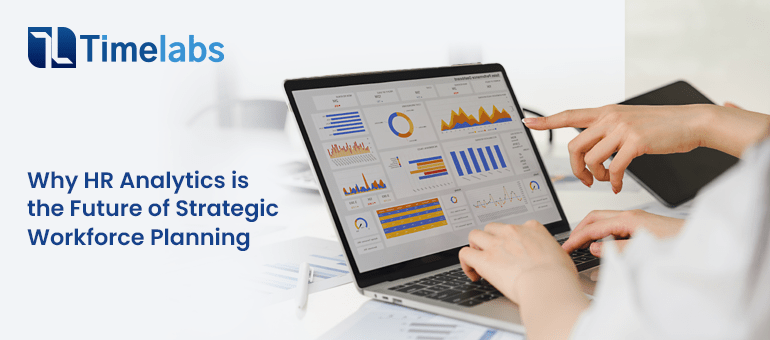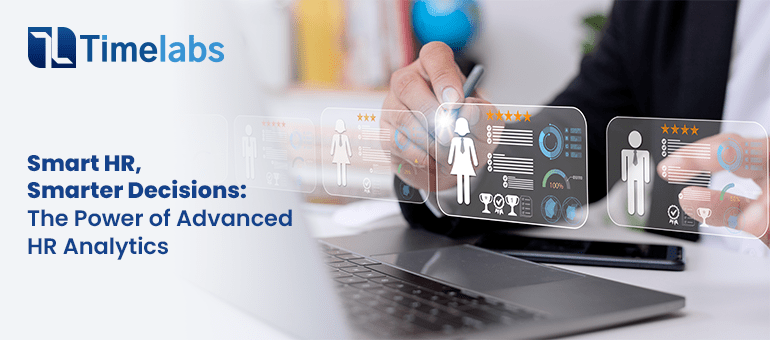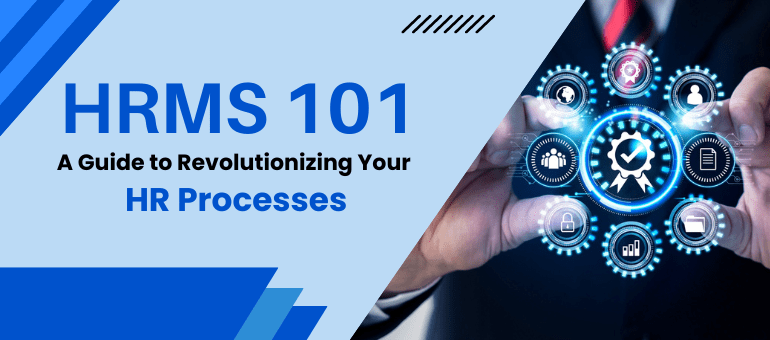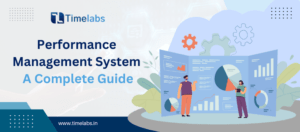Did you know that 44% of organizations expect significant skill gaps in the coming years, particularly in data analytics? This growing challenge makes HR Analytics in HRMS more crucial than ever for strategic workforce planning. While only one-third of organizations feel confident in addressing these skill gaps, the landscape is rapidly evolving.
The increasing importance of data-driven insights is evident in the 43% growth of people analytics teams between 2020-2023. Your organization can benefit significantly from this transformation – companies using Performance Management Software and analytics have reduced hiring time by 25% while improving retention rates. For instance, IBM’s implementation of HR analytics helped save millions in turnover costs through predictive retention modeling.
You’ll discover how to harness these powerful tools for your organization’s success, from creating data-driven HR strategies to implementing effective workforce planning solutions that align with your business goals.
Building a Data-First HR Strategy
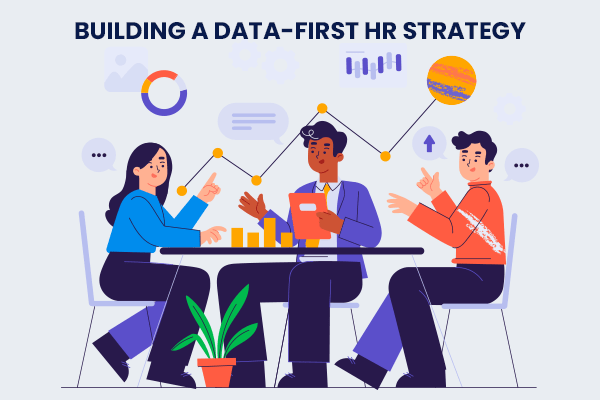
Building a successful HR analytics strategy requires systematic preparation and execution. Accordingly, organizations must first assess their readiness before implementing analytics solutions.
Assessing Organizational Readiness
Organizational readiness encompasses the alignment between stated and actual objectives across management levels. Subsequently, your focus should be on evaluating three critical components: people, processes, and systems. A successful implementation demands proper definition of roles and responsibilities to reduce confusion and resistance.
Change management plays a vital role in organizational readiness. Your organization should have processes to coordinate efforts and communicate changes effectively. Furthermore, involving more people in the change process increases commitment and success rates.
Creating Analytics Framework
The LAMP framework provides a structured approach to HR analytics, consisting of:
- Logic: Identifying key HR questions and hypotheses
- Analytics: Applying analytical techniques to HR data
- Measures: Selecting relevant metrics
- Process: Establishing systematic data collection methods
This framework specifically helps streamline HR operations and enables organizations to make data-driven decisions rather than relying on intuition. Essentially, the framework aids in identifying high-performing employees and developing effective talent management strategies.
Stakeholder Alignment
Stakeholder alignment remains critical for the success of HR analytics initiatives. Your stakeholders typically include executives, managers, HR professionals, employees, and even customers. Each group has unique needs and priorities that must be considered when developing analytics strategies.
To enhance stakeholder engagement, organizations are investing more in ‘consulting’ roles, specifically looking for professionals with ‘translating skills’ who can align stakeholder needs with analytics functions. These consultants work closely with both parties to identify essential expectations, priorities, and success criteria.
A data-driven HR strategy eliminates bias and human error in decision-making across all HR functional areas. Moreover, it empowers HR professionals to make quick, evidence-based business decisions that drive agility and productivity. Through proper stakeholder alignment and analytics implementation, your HR department can secure top management buy-in for strategic initiatives with predictable business results.
Leveraging Performance Management Software
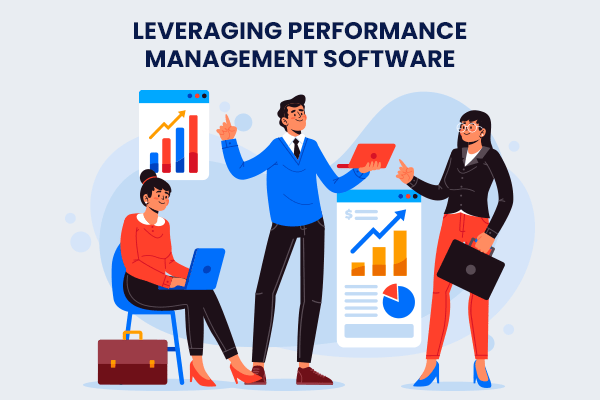
Performance Management Software serves as a cornerstone in modern HR analytics, enabling data-driven decisions across various aspects of workforce management. Indeed, quantitative performance management metrics offer a clear, direct way to gage employee and team performance.
Employee Performance Analytics
Performance analytics focuses on measuring employee contributions through specific KPIs. These metrics include:
- Sales closed and contracts signed
- Product quality and client feedback
- Process efficiency indicators
- Revenue per full-time equivalent (FTE)
Additionally, organizations using data-driven performance management report a 41% lower absenteeism rate among engaged employees. Through analytics, managers receive insights needed to objectively allocate resources, make promotions, and determine raises.
Goal Tracking and Alignment
Goal tracking systems integrate seamlessly with performance management platforms to create total alignment between individual and organizational objectives. Consequently, one-third of surveyed employees have two or fewer check-ins annually for coaching, feedback, and goal progression.
Performance tracking tools, including OKR management and ongoing KPI monitoring solutions, ensure everyone aims for the right target. Through HRMS integration, progress tracking allows both employers and employees to identify workflow trends and team development patterns.
Continuous Feedback Systems
Real-time feedback mechanisms have transformed traditional performance reviews into dynamic, ongoing conversations. Nevertheless, managers can now provide immediate feedback through data-driven platforms, fostering a culture of continuous improvement.
The Predictive Index’s People Management Study reveals that feedback frequency directly correlates with manager effectiveness ratings. Through structured check-ins, employees receive regular input on performance, potential improvements, and career opportunities.
Performance management platforms automate these processes, creating an ecosystem where feedback flows naturally between managers and team members. Through comprehensive performance tracking and customizable review templates, organizations can ensure thorough and efficient evaluation processes.
Strategic Workforce Planning with Analytics
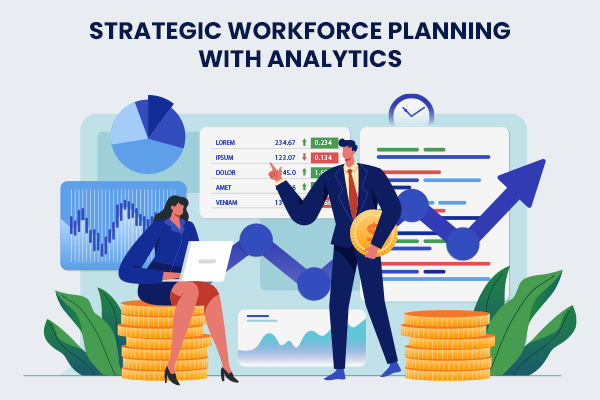
McKinsey & Company reports that 87% of organizations currently face skills gaps or expect them in the near future. Through strategic workforce planning powered by HR analytics, organizations can address these challenges systematically.
Talent Gap Analysis
A comprehensive talent gap analysis through HR analytics helps identify current workforce capabilities and future needs. Primarily, organizations utilize predictive analytics to forecast staffing requirements and skill deficiencies. Through data analysis, companies can uncover the skills and competencies that contribute to high performance, enabling targeted development initiatives.
Succession Planning
Data-driven succession planning has become essential for organizational continuity. Although only 35% of organizations maintain a formalized succession planning process, those implementing analytics-based approaches show remarkable results. Organizations with stronger bench strength are nearly twice as successful at promoting high-potential talent.
The implementation of succession analytics requires three key components:
- Structured talent reviews for assessing employee potential
- Career pathing tools for employee development
- Pipeline strength evaluation metrics
Skills Mapping and Development
Skills mapping creates dynamic profiles of employee capabilities, enabling real-time tracking and development. Notably, skills-based organizations are 98% more likely to retain high performers and 57% more likely to anticipate and respond effectively to change.
Modern workforce analytics platforms break down traditional organizational silos by integrating with enterprise systems. Hence, Learning and Development teams can design more targeted and impactful learning experiences based on detailed insights into employee skills and organizational trends.
The strategic implementation of skills mapping ultimately serves multiple purposes. Generally, it helps organizations identify skill gaps, predict future needs, and plan training initiatives with greater accuracy. By analyzing industry trends and changes in customer behavior, companies can identify crucial skills for future success and launch reskilling programs before critical shortages arise.
HR Analytics for Employee Experience
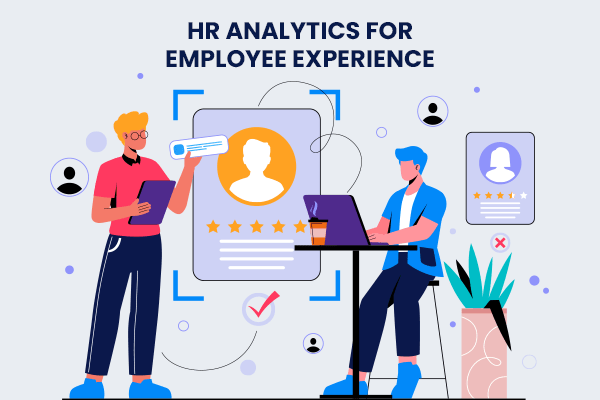
Data-driven employee experience management has become a cornerstone of successful HR strategies. Research shows that companies with robust employee engagement programs experience a 41% reduction in absenteeism and a 17% increase in productivity.
Engagement Metrics
Employee engagement analytics provide actionable insights through various measurement tools. Primarily, pulse surveys offer real-time feedback on employee sentiment, allowing HR teams to track satisfaction levels and identify areas for improvement. These brief, regular surveys typically focus on:
- Resource accessibility and utilization
- Alignment with company mission
- Professional development opportunities
- Workplace culture satisfaction
In fact, organizations implementing regular engagement tracking report 20% higher employee satisfaction scores within six months. Through Performance Management Software, your HR team can automate these assessments and gather continuous feedback.
Retention Analytics
Employee turnover costs organizations up to 33% of an employee’s annual salary. Therefore, retention analytics has become crucial for workforce stability. During implementation, HR analytics tools monitor key indicators such as unplanned absences, productivity patterns, and satisfaction scores to predict potential turnover risks.
Organizations using data-driven retention strategies report 43% lower employee attrition rates. Similarly, business units with engaged employees demonstrate 81% lower absenteeism. Through HRMS integration, your organization can track these metrics consistently and intervene proactively when warning signs appear.
Well-being Indicators
Employee well-being directly impacts organizational success, with research indicating that companies prioritizing well-being generate significantly better profits. Overall, comprehensive well-being analytics track multiple dimensions:
Physical and mental health metrics show that 76% of workers report high stress levels, affecting focus and productivity. Through HR analytics in HRMS, your organization can monitor work patterns, including overtime hours and vacation usage, to prevent burnout.
Work-life balance tracking reveals that teams reporting high levels of well-being demonstrate 53% higher productivity rates. Unless organizations actively monitor these indicators, they risk missing crucial signs of employee distress. Companies investing in employee well-being programs report a 3:1 return on investment, regardless of industry sector.
The implementation of well-being analytics requires systematic data collection through employee feedback channels, performance metrics, and attendance patterns. By analyzing these indicators, HR professionals can develop targeted interventions that address specific team needs and enhance overall workplace satisfaction.
Must Read: Why Investing in Employee Onboarding Software Boosts Productivity
Compliance and Data Governance
Protecting sensitive employee information stands at the forefront of HR analytics implementation. Recent studies indicate that 71% of HR leaders now prioritize compliance in their analytics strategy, marking a 25% increase in privacy-first analytics adoption.
Data Privacy Regulations
The regulatory landscape for HR data management continues to evolve, with GDPR imposing fines up to €20 million or 4% of global annual revenue for non-compliance. Primarily, organizations must focus on three critical regulations:
- GDPR: Requires explicit consent and robust data protection measures
- HIPAA: Safeguards employee health information privacy
- CCPA: Grants employees rights to access, delete, and restrict personal data usage
Role-Based Access Control (RBAC) systems have become essential, undoubtedly reducing unauthorized data access incidents. Through RBAC implementation, your organization can define precise permissions for data visibility across different roles.
Ethical Considerations
Beyond legal compliance, ethical data management demands a comprehensive approach. Certainly, organizations must obtain explicit consent before collecting employee information, especially for sensitive data like medical records.
Data minimization serves as a fundamental principle, simultaneously protecting employee privacy and reducing security risks. Your HR team should collect only necessary information, maintaining transparency about data usage and storage practices.
A recent PwC study reveals that 71% of organizations experienced data breaches last year. Obviously, this highlights the critical need for robust ethical frameworks in HR analytics. Companies like Microsoft and IBM report that 98% of organizations are now focusing on improving their data protection strategies.
Best Practices in Data Management
Implementing secure data management practices requires a systematic approach. First, establish clear data governance policies that align with organizational goals. These policies should outline:
Data security measures must include encryption, regular audits, and employee training programs. Likewise, implementing multi-factor authentication and top-level management approval for accessing sensitive information strengthens your security framework.
Regular privacy assessments and workforce education play vital roles in maintaining compliance. Eventually, organizations should develop a two-fold education system:
- Company-wide mandatory training covering basic privacy principles
- Focused training on GDPR requirements for key data handling roles
Document comparison software helps ensure data accuracy and detect unauthorized changes. Through comprehensive data governance frameworks, your organization can maintain both compliance and operational efficiency in HR analytics implementation.
Conclusion
HR Analytics has proven essential for modern workforce management, transforming how organizations handle talent acquisition, development, and retention. Your organization stands to gain significant advantages through data-driven decision-making across all HR functions.
The evidence speaks clearly – companies using analytics report 25% faster hiring times, 41% lower absenteeism rates, and substantially improved retention rates. These results stem from systematic implementation across key areas:
- Data-first HR strategies that align stakeholders and eliminate bias
- Performance management systems that enable objective employee evaluation
- Strategic workforce planning tools that address skill gaps effectively
- Employee experience analytics that boost engagement and well-being
- Robust compliance frameworks that protect sensitive data
Organizations that embrace HR analytics position themselves ahead of competitors, especially considering that 87% of companies face immediate or upcoming skills gaps. Your HR team can use these tools to create targeted development programs, establish succession plans, and maintain high employee satisfaction levels while ensuring data privacy and regulatory compliance.
The future of HR undoubtedly belongs to organizations that make smart, data-driven decisions. Start building your analytics capabilities today to transform your workforce management approach and achieve measurable business results tomorrow.
FAQs
Q1. How does HR analytics contribute to strategic workforce planning?
Ans: HR analytics plays a crucial role in strategic workforce planning by enabling organizations to forecast future talent needs, identify skill gaps, and develop targeted strategies for recruitment, retention, and employee development. It helps companies align their workforce with long-term business goals and adapt to changing market demands.
Q2. What are the key benefits of implementing HR analytics in an organization?
Ans: Implementing HR analytics can lead to faster hiring times, lower absenteeism rates, improved employee retention, and more objective performance evaluations. It also enables data-driven decision-making across HR functions, resulting in more effective talent management and strategic workforce planning.
Q3. How can HR analytics improve employee engagement and well-being?
Ans: HR analytics helps track engagement metrics, retention indicators, and well-being factors through pulse surveys, performance data, and attendance patterns. This allows organizations to identify areas for improvement, implement targeted interventions, and create a more positive work environment, ultimately leading to higher productivity and job satisfaction.
Q4. What role does data governance play in HR analytics?
Ans: Data governance is critical in HR analytics to ensure compliance with privacy regulations like GDPR, HIPAA, and CCPA. It involves implementing secure data management practices, establishing clear policies for data collection and usage, and maintaining ethical standards in handling sensitive employee information.
Q5. How can organizations prepare for implementing HR analytics?
Ans: To prepare for HR analytics implementation, organizations should assess their readiness by evaluating people, processes, and systems. They should create an analytics framework, align stakeholders, invest in performance management software, and develop a data-first HR strategy. Additionally, providing training on data analysis and interpretation for HR professionals is essential for successful implementation.
